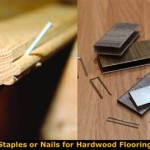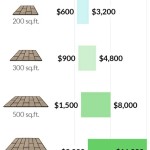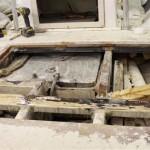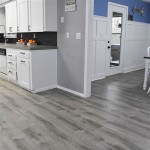How To Repair Tongue and Groove Porch Flooring
Tongue and groove porch flooring offers a classic and aesthetically pleasing surface for outdoor spaces. However, exposure to the elements inevitably leads to wear and tear. Common issues include rot, splintering, warping, and loose boards. Timely repair prevents minor problems from escalating into more significant and costly structural issues. This article provides a comprehensive guide to effectively repairing tongue and groove porch flooring.
Before commencing any repair work, a thorough assessment of the porch flooring is crucial. This involves inspecting each board for signs of damage, identifying the extent of the problem, and determining the underlying cause. Addressing the root cause, such as water damage due to poor drainage, is essential to prevent recurrence of the issue.
Safety is paramount. Wear appropriate personal protective equipment (PPE) during the repair process. This includes safety glasses to protect the eyes from flying debris, work gloves to safeguard the hands, and a dust mask to prevent inhalation of wood particles and other irritants generated during cutting and sanding.
Identifying and Assessing Damage
The initial step is a visual inspection. Carefully walk across the porch surface, noting any areas that feel soft, spongy, or unstable. Employ a screwdriver or awl to probe suspicious boards. If the tool penetrates the wood easily, it signifies rot. Look for visible signs of rot, such as discoloration, crumbling wood, and fungal growth. Pay close attention to areas where water tends to accumulate, such as near railings, steps, and around any obstructions. Note any boards that are significantly warped, cupped, or split.
Document the location and extent of the damage. A sketch of the porch with marked problem areas can be useful. Take photographs to provide a visual record of the damage before any repairs are attempted. This documentation can also be helpful when consulting with a professional for more complex repairs.
Check the condition of the underlying joists. While inspecting the flooring, also examine the joists that support it. Rot or damage to the joists can compromise the stability of the entire porch and requires immediate attention. Joist repair or replacement may be necessary before addressing the flooring.
Assess the condition of the tongue and groove joints. Examine the connections between boards for signs of separation, damage, or decay. If the tongue or groove is broken or deteriorated, it will affect the integrity of the floor and may require special repair techniques.
Repairing or Replacing Damaged Boards
The decision to repair or replace a damaged board depends on the severity of the damage. Minor damage, such as small cracks or surface imperfections, can often be repaired. However, boards with extensive rot, severe warping, or significant structural damage should be replaced.
Minor Repairs: Small cracks can be filled with epoxy wood filler. Clean the crack thoroughly, removing any loose debris. Apply the wood filler according to the manufacturer's instructions, ensuring it fills the crack completely. Allow the filler to dry and harden completely before sanding it smooth to match the surrounding surface. Splintered areas can be repaired using wood hardener and epoxy wood filler. Apply wood hardener to the area to strengthen the wood fibers. Once the hardener has dried, fill the splintered area with wood filler and sand smooth.
Board Replacement: When replacing a board, select a replacement board that is the same species, dimensions, and profile as the original. This ensures a seamless and aesthetically pleasing repair. If the original wood is no longer available, choose a similar species that can be stained or painted to match.
Carefully remove the damaged board. Use a circular saw to make two parallel cuts down the center of the board, taking care not to damage the adjacent boards or joists. Use a chisel and hammer to carefully remove the remaining pieces of the board. Remove any nails or screws that are holding the board in place. Be meticulous in removing old fasteners to avoid damaging the surrounding wood. Clean the area thoroughly, removing any debris or old adhesive.
Install the replacement board. Before installing the new board, apply a coat of wood preservative to all sides, including the ends and the tongue and groove. This helps to protect the board from moisture and decay. If necessary, use a block plane or sander to fine-tune the fit of the replacement board. Apply construction adhesive to the joists where the board will rest.
Carefully align the tongue and groove of the replacement board with the adjacent boards. Use a rubber mallet to gently tap the board into place. Avoid using excessive force, which can damage the tongue or groove. Once the board is properly seated, secure it to the joists with exterior-grade screws. Pre-drill pilot holes to prevent the wood from splitting. Countersink the screws so they are flush with the surface of the board.
If replacing a board in the middle of the porch, it may be necessary to cut off the bottom of the groove on one side of the replacement board to slide it into place. In this instance, use construction adhesive under the board for strong adhesion to the joists.
Addressing Common Problems and Prevention Strategies
Warping and cupping are common issues with tongue and groove porch flooring. These problems are often caused by uneven moisture exposure. To minimize warping and cupping, ensure proper ventilation under the porch. This helps to regulate moisture levels and prevent the boards from absorbing excessive moisture. Apply a water-repellent sealant to the porch flooring to protect it from moisture. Reapply the sealant regularly, following the manufacturer's instructions.
Loose boards can be a safety hazard and should be addressed promptly. Loose boards are often caused by deteriorated fasteners or damaged wood around the fastener holes. To repair loose boards, first try tightening the existing screws. If the screws are stripped, replace them with longer screws or use screw anchors to provide a more secure grip. If the wood around the screw holes is damaged, fill the holes with wood filler and then re-drill pilot holes for the screws.
Rot is a major threat to tongue and groove porch flooring. To prevent rot, address any sources of moisture, such as leaks or poor drainage. Ensure that the porch is properly sloped to allow water to drain away. Keep the porch surface clean and free of debris, which can trap moisture and promote rot. Apply a wood preservative or rot-resistant coating to the flooring to protect it from decay. Regularly inspect the flooring for signs of rot and address any problems promptly.
Proper maintenance is essential for prolonging the life of tongue and groove porch flooring. Sweep the porch regularly to remove dirt and debris. Wash the porch periodically with mild soap and water. Avoid using harsh chemicals or abrasive cleaners, which can damage the wood. Apply a new coat of sealant or paint every few years to protect the flooring from the elements. Inspect the flooring regularly for signs of damage and address any problems promptly.
Gaps between boards can occur due to expansion and contraction of the wood. Small gaps can be filled with flexible caulk designed for exterior use. Clean the gaps thoroughly before applying the caulk. Larger gaps may require the installation of shims or wedges to provide a more secure backing for the caulk. Be certain that the caulking material is paintable if repainting the porch floor is desired.
When dealing with complex or extensive damage, consulting a professional carpenter or contractor is advisable. A professional can assess the structural integrity of the porch and recommend the most appropriate repair solutions. They also have the necessary tools and expertise to perform complex repairs safely and effectively.

Fixing A Rotten Tongue And Groove Porch Floor The Craftsman Blog

Fixing A Rotten Tongue And Groove Porch Floor The Craftsman Blog

Fixing A Rotten Tongue And Groove Porch Floor The Craftsman Blog

Fixing A Rotten Tongue And Groove Porch Floor The Craftsman Blog

How To Replace A Rotten Wood Porch Floor Today S Homeowner

Fixing A Rotten Tongue And Groove Porch Floor The Craftsman Blog

Repairing Tongue Groove Porch Flooring

Fixing A Rotten Tongue And Groove Porch Floor The Craftsman Blog

How To Repair A Tongue And Groove Deck

Repairing Tongue Groove Porch Flooring
Related Posts








